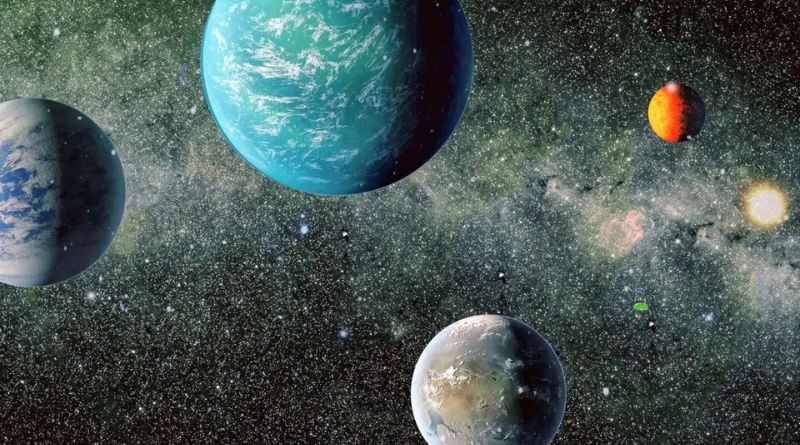The question of how many planets exist in the universe is both fascinating and complex. As our understanding of the cosmos expands, so too does our knowledge about the vast array of celestial bodies that populate it. This article delves into the current scientific understanding of planets, explores methods of detection, and provides insights into the sheer scale of our universe. Additionally, we will address frequently asked questions to give a well-rounded view of this captivating topic.
Table of Contents
Defining a Planet
Before we can discuss the number of planets in the universe, it is essential to define what a planet is. According to the International Astronomical Union (IAU), a planet must meet three criteria:
- Orbit around a star: A planet must revolve around a star, such as our Sun.
- Sufficient mass: It must have enough mass for its gravity to shape it into a nearly round form.
- Cleared its orbit: A planet must have cleared its orbital path of other debris, meaning it is gravitationally dominant in its vicinity.
Using these criteria, we can categorize known planets within our solar system and beyond.
The Planets in Our Solar System
In our own solar system, there are eight recognized planets:
- Mercury
- Venus
- Earth
- Mars
- Jupiter
- Saturn
- Uranus
- Neptune
In addition to these eight, there are also five recognized dwarf planets, including Pluto, Eris, Haumea, Makemake, and Ceres. While Pluto was reclassified from planet to dwarf planet in 2006, it continues to hold a special place in popular culture and scientific discussion.
Exoplanets: Discovering New Worlds
The real intrigue lies beyond our solar system. As of now, thousands of exoplanets (planets outside our solar system) have been discovered. The methods used to detect these distant worlds have greatly advanced over the past few decades.
Methods of Detection
- Transit Method: This technique involves monitoring the light from a star. When a planet passes in front of its star, it blocks a portion of the light, causing a temporary dip in brightness. This method has been the most successful in identifying exoplanets.
- Radial Velocity Method: Also known as the Doppler method, this technique detects the gravitational pull of a planet on its host star. As the star wobbles due to the gravitational influence of the planet, the light from the star shifts in wavelength, allowing astronomers to infer the presence of a planet.
- Direct Imaging: Although challenging, astronomers have also been able to directly image some exoplanets by blocking out the star’s light. This method reveals the planet’s atmosphere and can provide information about its composition.
Current Estimates of Exoplanets
As of 2023, astronomers have confirmed over 5,000 exoplanets across more than 3,600 planetary systems. Given that many stars have multiple planets, the number of planets in our galaxy alone could be in the billions.
Estimating the Number of Planets in the Universe
To estimate the total number of planets in the universe, we first consider the estimated number of galaxies. Current scientific estimates suggest there are roughly 2 trillion galaxies in the observable universe. Each galaxy contains millions to billions of stars, many of which have their own planetary systems.
A Rough Calculation
If we take the Milky Way as a model and estimate that it contains around 100 billion stars, with an average of at least one planet per star, we arrive at a staggering figure:
- Planets in the Milky Way: Approximately 100 billion
- Planets in the observable universe: 2 trillion galaxies × 100 billion stars per galaxy = 200 sextillion (2 x 10^23) planets
This estimate, while rough, underscores the vastness of the universe and the potential for an incredible number of planets.
The Search for Life
With billions of planets potentially scattered throughout the universe, the search for extraterrestrial life has intensified. Scientists are particularly interested in Earth-like planets located in the “habitable zone” of their stars, where conditions might be right for liquid water and, potentially, life.
The Drake Equation
The Drake Equation is a probabilistic formula used to estimate the number of active extraterrestrial civilizations in the Milky Way. While it incorporates factors such as the rate of star formation and the fraction of stars with planets, it also highlights the uncertainties in our understanding of life beyond Earth.
FAQs About Planets in the Universe
1. How many planets are in our solar system?
Our solar system contains eight recognized planets: Mercury, Venus, Earth, Mars, Jupiter, Saturn, Uranus, and Neptune. There are also several dwarf planets.
2. What is an exoplanet?
An exoplanet is a planet that exists outside our solar system. Thousands of exoplanets have been discovered, with many more likely to exist.
3. How do scientists find exoplanets?
Scientists primarily use methods such as the transit method, radial velocity method, and direct imaging to discover and study exoplanets.
4. Are all planets in the universe similar to Earth?
No, planets vary widely in their characteristics, sizes, compositions, and atmospheres. Some may be similar to Earth, while others could be gas giants or ice planets.
5. Can we travel to other planets?
Currently, human travel is limited to our solar system, with Mars being the primary target for future manned missions. Travel to exoplanets is not feasible with existing technology due to the vast distances involved.
6. Is it possible for life to exist on other planets?
While we have not yet found definitive evidence of extraterrestrial life, the discovery of numerous exoplanets in habitable zones raises the possibility. Ongoing research continues to explore this intriguing question.
7. How many galaxies are there in the universe?
Current estimates suggest there are about 2 trillion galaxies in the observable universe, each containing millions to billions of stars.
8. What is the most Earth-like exoplanet discovered?
As of now, one of the most Earth-like exoplanets is Proxima Centauri b, located in the habitable zone of its star. However, further research is needed to assess its potential for supporting life.
Conclusion
The question of how many planets exist in the universe remains open-ended, primarily due to the limitations of our current observational technology and understanding of cosmic phenomena. However, estimates suggest that the number of planets could be staggering, reaching into the hundreds of sextillions. As we continue to explore and understand our universe, the allure of discovering new worlds and potential life beyond Earth captivates our imagination, driving scientific inquiry and exploration forward. Whether we are looking at the planets in our solar system or distant exoplanets in far-off galaxies, the quest for knowledge about our cosmic neighbors is only just beginning.



